INTERVIEW AT VOGAGE LA MAGAZINE ( Arimany’s In depth Live Story)
Nacho, let’s start with your story. We’d love to hear how you got started and how the journey has been so far.
I was born in Madrid, Spain, and one of my first memories I have was asking for a piano when I was six years old. Probably because I always saw an old piano at my grandmother’s house, and I was deeply connected with my grand aunt, María de Pablos, who was the first woman in Spain’s history to become an orchestra conductor. By age seven, I was already combining my classical piano studies with performing as soloist singer in operas, choir and symphonic pieces leading me to share stage with soprano diva Monserrat Caballé at the Spanish National Auditorium. I was 13 years old.
Continue reading interview HERE:
Review from © Straz Center for the Performing Arts:
Nacho Everyday Percussionist
Nacho Arimany’s years working with rhythm showed him how natural harmonic patterns heal the human body and mind.
At first glance, Nacho Arimany can easily be confused for a European version of holistic healer J.P. Sears in the “Ultra Spiritual” spoofs.
But after a few moments into an interview or demonstration, Arimany reveals himself as the real deal. Here, he explains the cultural component of the recent neuroscientific findings about the effects of movement and rhythm on the brain…
Read the full review at Straz Center for the Performing Arts: https://blog.strazcenter.org/2017/01/24/nacho-everyday-percussionist/
Interview with Source & Fluence at Scorpios on Mykonos:
The Sound of Life
Photography: Lucius Von Berlepsch
Text: Source & Fluence

Nacho Arimany is a composer, multi-instrumentalist playing his distinctive signature sounds fusing world music and jazz. The Spanish-born, NYC-based artist works primarily with organic, natural melodies, heavily influenced by Indian and West African percussion, as well as oriental harmonies. Emerging out of the flamenco lineage, Nacho’s career has since seen him perform at the New York City Center Theatre, Lincoln Center, and at Carnegie Hall, as well as releasing a number of solo albums and developing his signature Arimany Method, which harmonizes movement and voice around the Golden Ratio. He also works in the realm of sound therapy to improve brain function. We caught up with Nacho to go deep into the ideas and science behind his practice.
As a child you trained as a pianist in a music academy. At some point later in life you gave up your formal studies turning head on to vernacular percussion learning much of it non-methodically through direct observation, imitative practice, self-tuition, trial and error and sheer experimentation. Radical as the shift sounds, was it a break away from the formalities of musical studies or rather about reaching for the instrument which you found to have more of an expressive potential? Perhaps something else also prompted your ultimate choice…
It was not so much about the instrument as about the context and the course of my education – the relentless drive for perfection choking on the insecurities at such a fragile age, exacerbated by helpless solitude and confusion amplified by the abstractions of music theory. The insulated thick walls of music school did not resonate with my piano and solo vocal studies.
It was my conscious decision to withdraw from that context to focus instead on percussion while exploring the musical traditions of the world. At the age of 15, it was not that much of a rational choice but a true calling, the voice of the soul, when I first encountered an African drum circle in Paris. It was music for the people, the music of the streets – panstylistic, extroverted and jubilant. This music was bursting with free energy radiating communal spirit and igniting the sense of belonging – all that my very nature was longing for.
Back in Madrid, I instantly bought a small Moroccan bongo and went on figuring things out on my own. One year into it, I was lucky enough to meet a darbuka maker who was also a percussion teacher grounded in the Sufi tradition. He introduced me to the world of North African and Sufi rhythms; illuminated the philosophical dimension of Sufism – the sources to become the foundation for my development. Later, I expanded and solidified the basis with my studies of Afro-Cuban and West African drumming – the kind of activity, which is never solitary exercise always requires a group effort.
“The insulated thick walls of music school did not resonate with my piano and solo vocal studies.”
The formal vs. informal part of your education, classic piano vs. traditional gourd which you have brought from Africa to expand the sonic spectrum of your native flamenco. What is it about those academic abstractions that makes them so confusing and the rhythms of the streets so liberating?
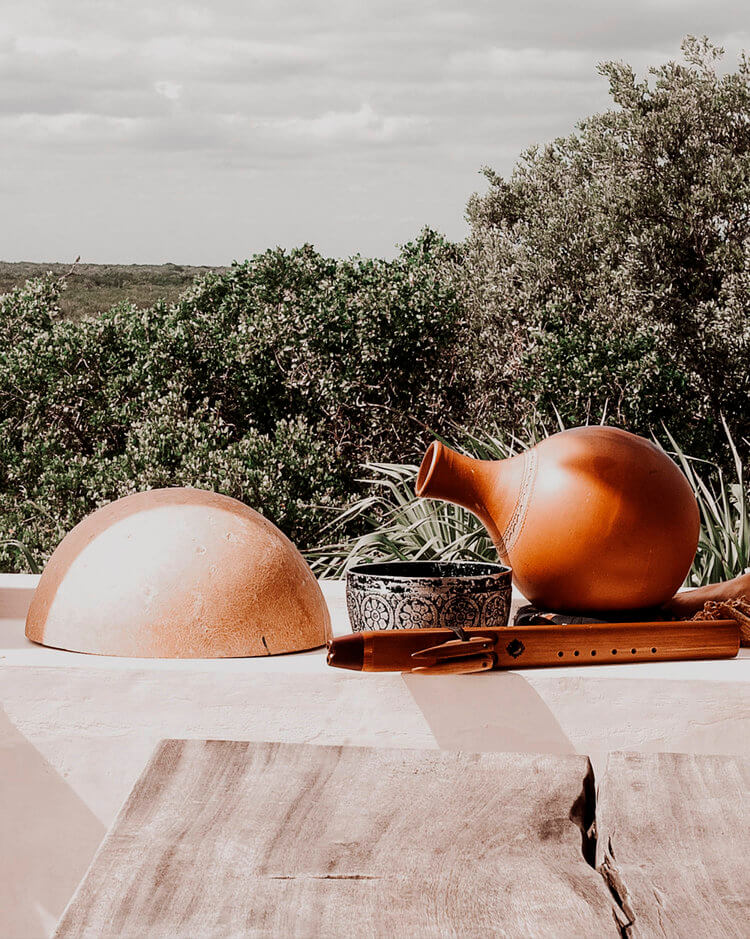
My formal part of education was anything but a walk in the park. I started studying piano very early, at the age of 6. At this age, staring for hours at a score does not yield one much results in terms of understanding the concept of time and measure. It’s way too tall an order for a kid. The concept of musical time-space is highly abstract, a theoretical construct which requires an adequately high level of intellect to be grasped. At the age of 6, I simply was not mentally equipped to jump and fly this high. Hence, the rebellion – with me opting instead for methods based on hands-on experimentation and free-play discoveries.
Later in life, I was reflecting on this episode pondering other reasons for my dropping out from the formal process. It was also about my helpless solitude which was felt most intensely under the pressure of rigorous examination. The very setup of it at the conservatoire is enough to scare all the muses out of you. You are seven years old, confined in a room, alone, confronted by five judges, with three scores to read and memorize in twenty minutes… and then to sing them from memory all the while playing the instrument from a random utterly unfamiliar notation. Those were the most excruciating situations in my life. This is the kind of experience I wish to no one.
By contrast, the way one learns indigenous percussion is from within a community: a group of students practicing together taking clues from their master-percussionist who is an exemplary instrumentalist, but also the leading light in other aspects of their lives. One learns by listening and hearing it; learns by doing it with all their love for the instrument and devotion to music; one learns through a ritual. Above all, one learns through living it.
“This music was bursting with free energy radiating communal spirit and igniting the sense of belonging…”
Music becomes an essential part of your life connected to nature. It becomes a form of self-expression to be shared with others and as a form of self and communal empowerment. Curiosity and research is an integral part of this process.
This way of learning percussion, this way of musical self exploration and discovery swung open the gates to me carrying the calebasse drum from Mali. Once I discovered its raw sonic properties, its pure natural resonance – playing gourd on water and playing it on the floor – I was absolutely captivated by its sound and could not resist the temptation of introducing it into the gamut of flamenco instrumentation in Spain, as a supplement to the traditional cajon. In my case, as an alternative to it because it felt more organic to my ears and also in shape. Flamenco choreographers, guitarists and singers on the scene gave the drum an eager welcome.
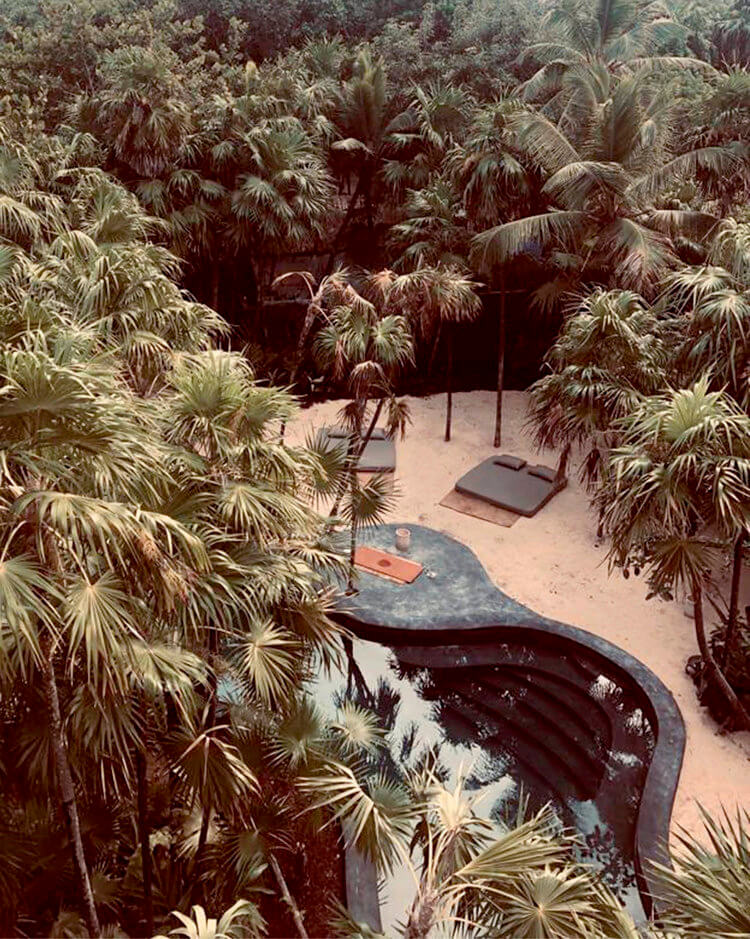
Flamenco comes across in imagination as an ideal formative scenario for your development as a musician in the dialogue between different cultures; and, in an existential sense, as a musical universe of a nomad. Some sources attribute the creation of flamenco to the Spanish Romani, itinerant tribes stretching in their eternal wanderings as far as India and absorbing on their ways the elements of different music cultures – be that microtonalities and ornamentation referring to the Orient; or rhythmic patterns fleeing from regularity with counter-rhythms reminiscent of the African root influences; portamentos instead of discrete intervals moving from pitch to pitch employed in flamenco as if to navigate between various harmonic systems in the world… What about this genre has been driving you and your music all along for so many years? To a degree, it also characterizes your most recent work in psychoacoustics?
Flamenco is my PhD thesis in music, so to say. Its rhythmic complexities and countercurrents, its melodic superabundance, its plethora of styles, its lavish ornamentation and the manner in which one learns – not in a classroom, taking time, years engulfed in it – and then balances all these variables in composition on spot is beyond explanation. Flamenco can only be demonstrated. It cannot be described. Not even as music. It’s an art form and very peculiar language spoken by the dancer, the singer, the musician and very much by the audience, too. Rhythm in this language is the key, the code for expression, participation, reception and development of the form.
While being a traditional form, this language is ever open to innovation and thus never stagnates, never ceases to evolve. This perpetual progress of flamenco has always mesmerized me. Knowing this language and being in control of its techniques enables me to communicate with any other kind of traditional music and musicians around the world, including jazz.
Further more, who would think there is a connection between flamenco and cognitive science? With no formula or shortcut to flamenco, figuring it out all for yourself, your brain thrives acquiring an extra processing and creative power. While then playing flamenco, intuitively as it is, sharpens your attention – responding on the spur of the moment to impromptu vocals, chords and the moves of a dancer. It’s a mental and physical exercise of full presence in time and space. As a creative combination, flamenco is always one’s response and instantaneously a stimulation guiding the musical or choreographic choices of other participants in the act. This being together in the moment and fully present in here and now is one of the pillars of my recent work in psychoacoustics and transformational sound and music.
This is interesting, indeed – how flamenco integrates all these expressive fields considered separate – and answers my other question about the link between your music and dance. The annotation to “Silence-Light”, your debut album released in 2007 to great acclaim, presents it as a collaboration with a number of musicians including a flamenco dancer. I was wondering how dancing can be part of an album.
“It’s a mental and physical exercise of full presence in time and space.”
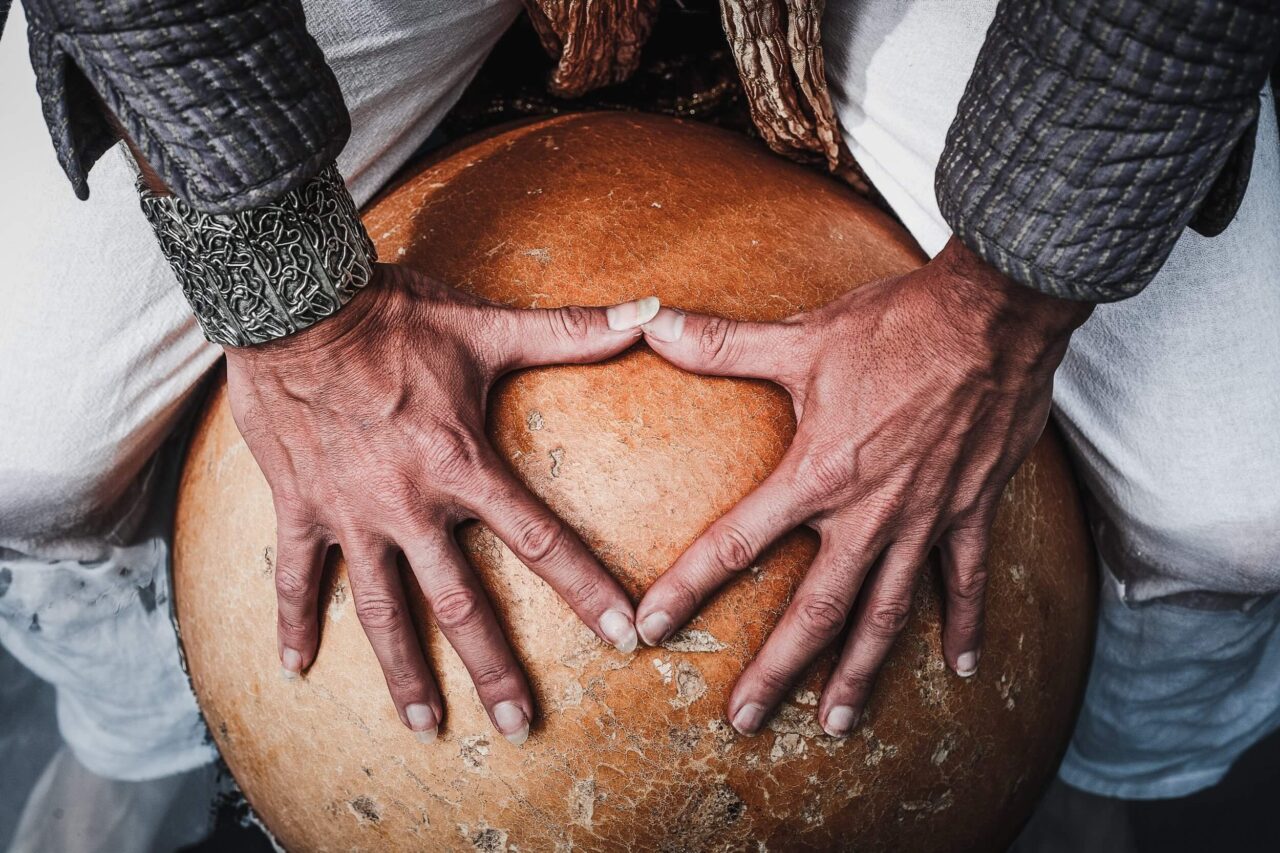
“In Time”, your other release, is phenomenal on at least two counts: 1) it captures the sounds of over 100 instruments, primarily indigenous, all acoustic – membranous drums from West Africa and the Middle East, clay drums from Nigeria, South India, and South America, seed shakers from Colombia and Brazil, Malian calebasses, Vietnamese wooden frogs, Peruvian cajons, Tibetan bowls and crotales, Indian bells, and Mexican whistles, along with cymbals, gongs and so on down to body percussion; and 2) the volume is compiled based on the methodology developed by neuroscientists to influence brain performance. What is the cause-effect relationship between all these indigenous sounds and the processes in our not so indigenous brains? In other words, how do clay drums from Nigeria transform our digitally intertwined minds? What do we mentally achieve listening to wooden frogs?
There is this one company specializing in advanced brain technologies. A few years ago they approached me with the idea of creating a program to maximize brain functioning to treat autism, attention deficit disorder, brain damage, anxiety and other conditions. I proposed a method based on rhythm and sound frequency stimulation. We recorded all the percussion instruments I have, one by one, and then ran spectral analysis on each sound. Now we have a precise map of the frequencies, harmonics and subharmonics of those instruments. The spectrogram results were remarkable.
All these instruments coming from various indigenous cultures and traditions, from all over the world, are built of natural materials. Their harmonics and frequencies combined cover the full spectrum of the human hearing range which is from 20 hertz to 20 kilohertz. When played, these various frequencies prop up and enhance various brain capacities.
The wooden frogs which I used – there are 4 different ones in the compilation – have dominant frequency signatures in the range from 900Hz to 12kHz. Frequencies of 900Hz to 4kHz is the sound which stimulates focusing, attention and concentration; also facilitates speech and language. At 4kHz and above, it energizes brain spurring creativity, intuition and high-stakes executive decision making. So these frogs – their sounds processed with certain psychoacoustic and mixing techniques – were used in the compositions intended to boost specifically these brain functions.
The frequencies and subharmonic properties of the udus, clay Nigerian drums, range as wide as 62Hz to 8kHz. It’s the spectrum that at 62Hz-900Hz lulls the body and calms the mind engaging the parasympathetic nervous system while above 1kHz having the same effects as those of the wooden frogs.
The udu drums are amazing. It does not take science to fully appreciate their deep somewhat fluid emotive sounds – they are believed to be the voices of distant ancestors. You instantly fall in love with the instrument. It makes you feel good aligning your thoughts and feelings, grounding your body. It’s one of the instruments emitting the kind of vibes which I define as elemental sounds. Traditional, they are also natural instruments with their technical designs revealing innate knowledge perfectly in tune with nature and with their sounds effectively connecting one to nature.
“This being together in the moment and fully present in here and now is one of the pillars of my recent work.”
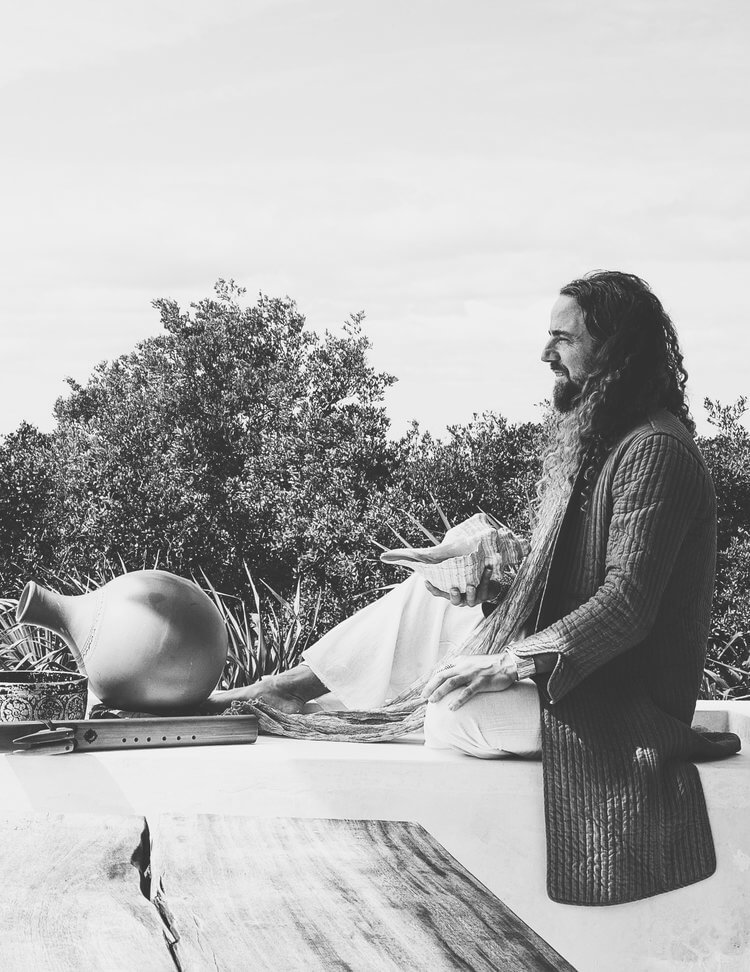
Speaking about the neuroscientific methods of the brain functionality improvement for the sake of one’s well-being and your voluminous work in that direction in music, how do you respond to those in the mind&body transformative field whose methods seem to be the direct opposite aiming to bypass the brain and, in a sense, to shut it down? Their moderate claim is that, in view of enlightenment, thinking is good only to an extent. The same applies to emotions, learning and other higher brain functions. As in Zen meditation where enso means hole and peak performance reads as sitting still: “Sitting lifeless, nothing happens. Spring comes, grass grows.” — Matsuo Bashō (1644–1694).
No way to bypass or shut down the brain. The neurophysiological principle of entrainment is always operating among other processes. What they mean is the mind – that constant train of thought often referred to as “the monkey mind“. The Buddha held that the human mind is filled with drunken monkeys flinging themselves from tree branches, jumping around, and chattering nonstop. Their methods aim at achieving an internal quietude wherein the mind is still. Brain activity in this condition translates into alpha waves in the brain.
Meditation techniques using body movements, breath, visualization, or mantra repetition like in transcendental meditation, yoga, qi-gong, tai-chi, exercises and other techniques help to create this mind and body alignment where the mind rests still; and also trigger the release of certain hormones and neurotransmitters that induces this state.
The use of specific rhythmic patterns in breath, movement and also by listening to these patterns in music, along with specific frequencies, are also powerful tools to help achieve this state of stillness, peace and full presence, alpha state in brain function.
Much of your current music and work in the field of transformative experiences revolves around the technical notions of frequency and resonance, and their structural effect on our minds and bodies. There has been a debate running for quite a while in the music theory circles and beyond over which frequency is most natural and resonates with our inner structures most favorably. Some argue that 432Hz* is the vibration of our entire universe which encompasses the objects as distant as the Sun and as central and integral to our being as our hearts. However, our music vibrates at 440Hz** with almost all acoustic instruments tuned to this particular frequency. Some demand a reform tuning down the instruments and making it the new standard. Others think the difference between 432 and 440 is trivial, if not the whole science behind it confused, and that the issue of the effect on us is blown out of proportion: People are desperate to find some meaning to their music, as to anything – anxious so much that they readily grasp at any oversimplification, like this one frequency that must have some significance. Where do you locate yourself in this debate and what informs you in your position?
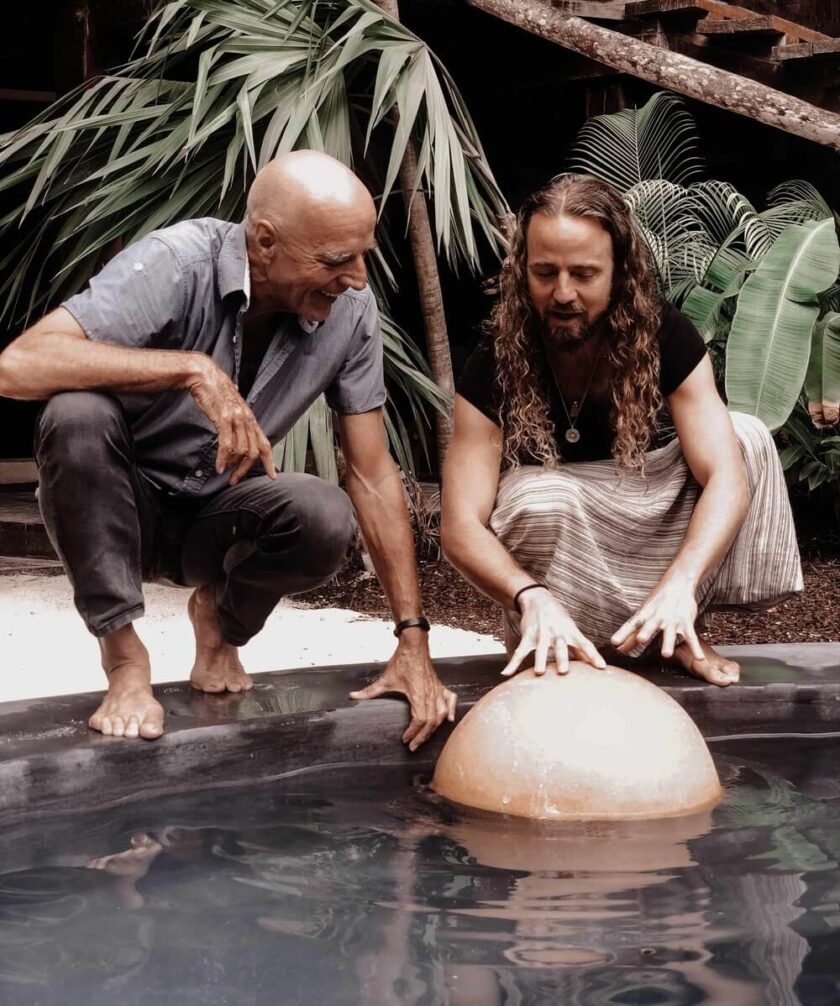
I am a huge advocate for tuning instruments to 432Hz. The issue has a lot of relevance to my work as it refers to how sound affects physical matter, cells and molecular structures. What happens as a result of this frequency and its derivatives being played is sympathetic resonance: the body awakens its natural frequency responding to external vibrations of similar sonic and harmonic attributes.
When you play an instrument such as cello or guitar tuned to 432Hz as their base frequencies, you have as a phenomenon not only all the strings responding with their full overtone series in each note, but also the wooden bodies of those instruments vibrating in tune with the strings and, by extension, our bodies resonating with the overall sound frequency – deep down to the molecular level. You feel these sounds with every fibre of your being – in a literal sense. At 432, it’s not just aesthetic experience, but also inner transformative.
It is a debatable issue of course, as almost everything in science, and sometimes you hear arguments from the 432Hz camp that 440Hz creates dissonance which disturbs natural processes in the body and mind and thus all the instruments out there need to be rebuilt to resonate best with 432Hz. I don’t think so. My point is simply that I believe that 432Hz gives a softer sound, brings greater psychological benefits and has more profound physiological effects.
In any case, 432 has been my choice since a decade ago. All the music I have produced and play for therapeutic purposes is in tune with 432Hz. When I play live concerts, my guitar, harp, flutes and other instruments I bring are all tuned to 432hz. I also have it my rider for the piano to be tuned to 432Hz. Though I understand that it’s difficult for the venues to keep tuning it up and down for every occasion as most performers play it at 440Hz and they keep it like this.
There is so much more to this issue which informs my preference for 432Hz. But for all practical purposes of this interview, let’s leave it at these points for now.
Music has been used as a healing therapy for most of human history. Ancient Arabic cultures had musicians working alongside physicians. The Greeks used music to treat mental illness. It has powerful and diverse effects on both the body and mind, influencing breathing and heart rate, triggering the release of hormones, stimulating the immune system, and boosting the brain’s cognitive and emotional centers. Your other project of notice is Elemental Sounds & Rhythms, a workshop exploring various vibes and their effect on the development of certain mental and physical faculties in humans. What basic properties of music would you suggest as a sonic cocktail recipe to boost one’s creativity in the field of music itself?
I use elemental sounds and rhythms to generate a more balanced and fully vibrational field where creativity obtains and expands as the result of full alignment of the mind and body. As we tune to nature discovering its rhythmic patterns and harmonies, we mirror these natural patterns and harmonies in our lives and creative processes.
When we turn to nature, we see it brimming with diversity stretched out by the polarities therin. But in nature we also find a constant and precise common pulse of creation and growth that maintains the equilibrium.
That’s what I love about music and nature. Both have tensions in the growth, but nature and sometimes music resolve the equation with harmony in the growth when we look at the patterns within time. That’s is what my work with Elemental Sounds and Rhythms and the Arimany Method is about.
The creative expression and growth of a person and artist is reflected in the tonality of their voices, or the tonality of their instruments. I am not talking about technical qualities of music. I mean the authenticity and truth of music. For me, the only way to achieve full creative potential musically is to connect with your authenticity and inner truth as a human being. Then the authenticity as a creator follows through: your authentic voice.
To achieve this state of deep integration with your authentic voice, we just need to create an inner space of safety and strength, free of judgement and criticism, where creative energy can flow and can be released into to the world.
Sounds always occur within a certain space where space is as important as sounds, if not more so. The task is to create the kind of environment where sound can flow free evolving to reach the peak of its potential.
So the key point is to create that architecture in the brain and in the body where there is a safe space for the voice, the creative raw voice to exist. So for that, we need to work with specific rhythmic patterns that help built that architecture and full alignment of the mind and body, so there is no separation, no judgement, a space of the resonance for that authentic voice to emerge and evolve.
That is the point of my Arimany Method – a voice, breath and movement technique that helps to built that architecture. Synchronizing the brain with the natural harmonic pattern of growth and evolution through rhythmic body movements and breath you create a new brain architecture, and specific space in the body in which the true resonant voice can be released achieving natural state of flow, which is the state for creativity and transformation to happen.
Speaking of a sonic cocktail recipe… Yes, it’s about entraining your brain with rhythmic patterns of nature and using your voice as the catalyzer of your creation. It doesn’t matter if you are a guitar, player, a pianist, a cellist, a DJ, or a singer, your flow in creation is defined by the flow and freedom on the release of your authentic voice that is awaken and supported by the strength of your internal rhythmic pulse which also defines the space and strength within you.
This process will also help align the mind and body, the state of focus and inner connection with yourself that will launch your productivity and will catalyze all creations. Yes, entraining mind and body with Golden Mean patterns through movement and breathing so you will embody the temple for creation. Once the temple is created and strength is felt and embody too. There is no space for judgement, nor to criticism, so authentic voice has space to exist in freedom and full potential, without any limits. Yes, your body as temple of creation.
I believe rhythm and voice are the key elements for the creative expansion. Coming back to true nature and original sound, which is your voice. You can learn the techniques of any instrument by practicing, but what will distinguish you from others and what will create an impact is the authenticity of your playing and the truth of your message resonating with the hearts of your listeners. That will be reflected and embedded in your sound: your true voice in your hands.
Read the interview at Scorpios: https://www.scorpiosmykonos.com/enc-sound-of-life
Review from the Standard-Examiner:
World music composer uses rhythm to bridge between cultures
by Raychel Johnson | July 16, 2015
Nacho Arimany is more than a multi-instrumentalist with a special ear for world percussion, he’s a translator, and a channel for creating dialogue between different cultures. This dialogue is spoken through rhythm, and Arimany said this language is universal and spoken by all of us.
When he’s on stage, whether during his solo performances or when he’s joined by an improv jazz trio, Arimany is surrounded by his pallet of instruments. He sees them all as different colors that paint the picture of humanity.
“I always play two instruments at a time, it is really rare that I’m only playing one instrument, so I’m putting in dialogue these instruments that come from different cultures,” he said. “So I really see myself like this bridge and translator between cultures, colors and rhythms.”
During his solo show at Peery’s Egyptian Theater on July 25, Arimany plans to sit on the floor with his assortment of world instruments that also include the piano, guitar and harp. He said of all instruments he’s brought for the performance, he’s most honored to play the harp.
“I just came back from Asheville, North Carolina, at a percussion festival, and one of the sponsors was Heartland Harps maker, and I will be able to play harp for one piece and he is going to send one harp of his for the Egyptian Theater for me to play,” Arimany disclosed. “So I am really excited too.”

Arimany said all these instruments are created from elements of nature, and he doesn’t feel overwhelmed being surrounded by so many noisemakers.
“For me it’s such a joy to have all those instruments around me, it’s like having the whole world around me in colors,” he said. “At the very end I realize I’m just putting together elements and sounds of nature that comes from cultures and traditions, so the soul and the body can resonate deeply with these rhythms, and this music and sounds.”
Along with the earthly elements Arimany brings to life with his improvisational jazz music, He sees music, especially rhythm and melody, as “one eternal pulse.”
“I see myself as this connector between cultures and this translator between cultures and I let the instruments play themselves through me,” he said, “and rhythm has this amazing property of bringing roots and rhythmic patterns and pulsation from different cultures into one eternal pulse, I really love that.”
Jazz in its nature is full of subtle communication between instruments, and the improv characteristic of the genre is what pulled Arimany to it in the first place. Raised as a vocalist and pianist, Arimany said he rejected the perfectionism base of his classical training in his teens.
This rebellion started when he first heard a drum circle in the streets of Spain.
“I ran out of that environment because it was so structured, and I felt there was something missing, I felt like there was something missing in all the perfectionism and I get really exhausted from that,” he said, describing his journey through music.
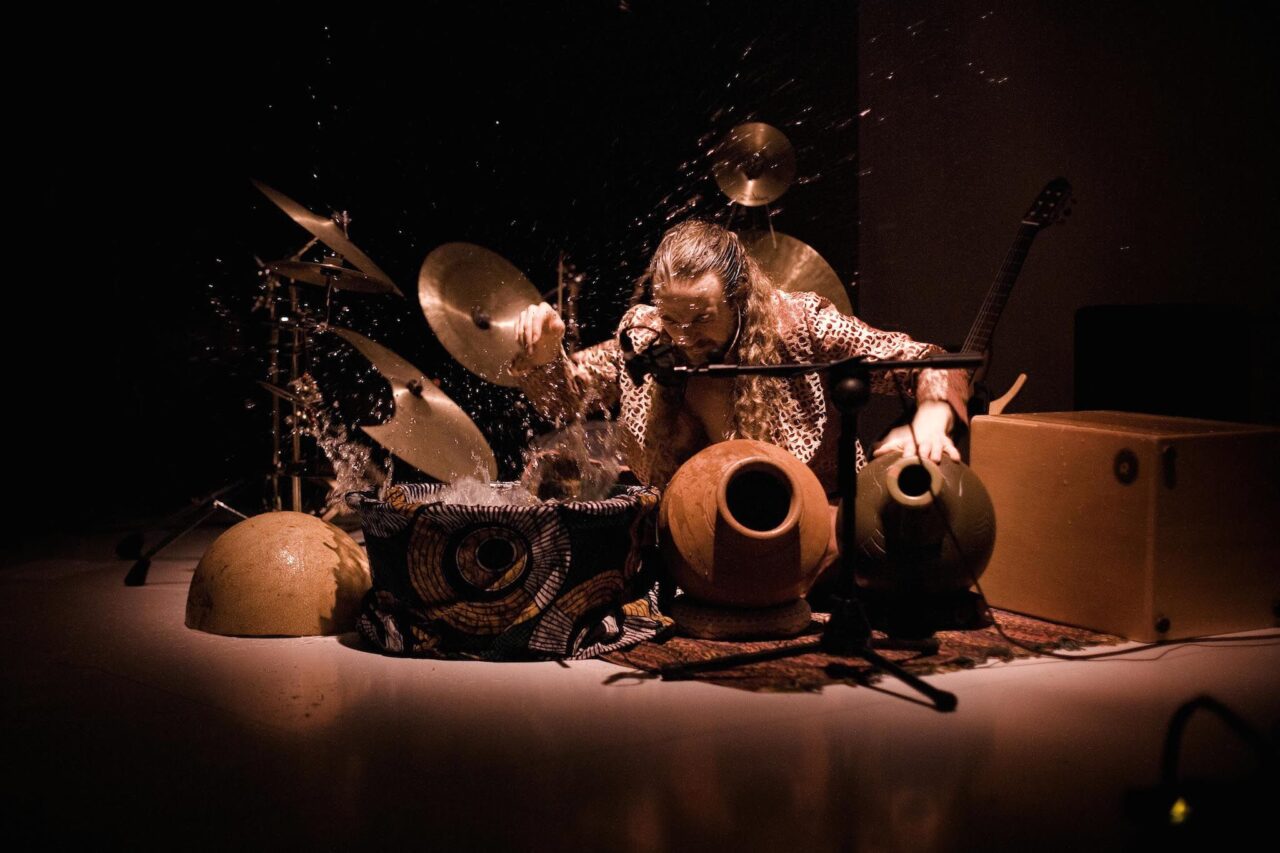
“Then when I found and started hearing drums on the streets with people in a circle playing together, I realized I want to be part of that, I want to be part of the community, I want to be part of that celebration.”
Arimany’s journey through music has allowed him to engage in the beats of cultures from all over the globe. His most recent recording project, “InTime,” is a music therapy program in collaboration with Advanced Brain Technologies. Arimany said it’s a collection of his compositions that span over five hours.
“The music, I’m so proud of the music,” he said. “I put together all these ancient rhythms and ancient instruments with modern instrumentation like the piano, guitar and harp.”
Much like his work on InTime, Arimany promised his local performance will be “sound poetry” that will take listeners to a different time and place.
“At the concert I will just use the guitar for the instrument for sound poetry as I call it, sound poetry, in the way that poetry also in traditions has been used as a channel for the source to get back to, for the soul to go back to the source,” he said. “So then I translate words into sounds, I use the sound of the guitar as drawing poetry too.”
While on stage and performing live, Arimany said his mind follows where is heart is leading, and that is always to the source of sound and the source of the cultural phenomenon he’s creating in real time. Although he always has a plan and itinerary for the concert, he’s flexible in following the sounds.
“I approach the instruments, like for example the harp, in a really rhythmic way that also helps along my voice to sing, and also bring along all these melodies from different countries,” he said.
“So the concert will be a great journey through the cultures of this world, and all the possible sounds from the earth aligned with modern instruments and all instruments. So try to make a journey between the past and the future sound of music.”
Contact reporter Raychel Johnson at 801-625-4279 or rajohnson@standard.net. Follow her on Twitter @raychelNEWS.
PREVIEW
- WHAT: Nacho Arimany
- WHEN: 8 p.m. July 25
- WHERE: Peery’s Egyptian Theater, 2415 Washington Blvd., Ogden
- TICKETS: $15/advance, &21.50/day of; 801-689-8700; https://www.ogdenpet.com/
Read this review at the Standard-Examiner: https://www.standard.net/entertainment/music/2015/jul/16/world-music-composer-uses-rhythm-to-bridge-between-cultures/